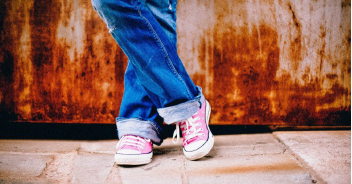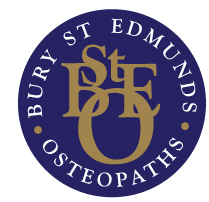Keep moving and stay active throughout your day!
Why do we talk about sitting less? How can we actively reduce the time we spend sitting and how can standing more, benefit our ability to move?
Most of us aim to exercise and get ourselves moving for an hour a day but a lot of the time things crop up and we lose motivation or our symptoms stop us. How can we expect our bodies to move full-on for an hour at the end of a day spent sitting for eight hours? Our bodies adapt to our external environment and if we sit often, we become good at sitting and poor at moving.
Why is sitting all the time so bad?
We mentioned previously that sitting isn’t bad, it’s the amount of time that we are there that can be the problem. Spending too much time in any position for prolonged periods can have a negative effect on our ability to move well.
When we are sitting, we are in a more relaxed and rested position, our heart isn’t having to work as hard to push the blood around the body. The abdominals and glutes aren’t as engaged, they can become tight and less able to perform correctly. Sitting even changes our breathing patterns as it can reduce the ability to breath diaphragmatically (expanding the belly and not lifting the shoulders). This leads to shallow breathing, can cause tightness in the upper back, chest and neck. Breathing from the stomach helps calm down the flight or fight response as it allows you to breath deeper, which can help reduce stress and anxiety.
What are the benefits of standing?
Some studies have suggested that standing can increase productivity, improve our working memory (ability to recall and process information) and of course counts towards being more physically active. It’s good for our balance too! Think of standing on a train – do it every day and it gets easier!
For those that can’t stand – engaging in chair-based exercises throughout the day or getting a therapist to help you to stretch out can have huge benefits such as decreased pain, stiffness and improved flexibility.
Changes to try today
- Walking meetings, standing meetings, getting up to go talk to someone rather than sending an email.
- Moving the bin further away so you have to get up to dispose of rubbish.
- Implement a standing desk at work – You can apply to an “Access to Work Scheme” which helps provide funding for things like ergonomic chairs, standing desks and anything else to make working less dis-advantageous if you have a condition which makes being at work uncomfortable.
- Walk or cycle to and from work
- Join a Nordic walking club or cycling club during the week to increase your time outdoors
- Stretch out the quadriceps (front of the thigh), hamstrings and calf’s every three hours or so. Hold each for thirty seconds. What we see as therapists consists of splayed knees, “duck feet” and tight hip flexors. Stretching is a great place to start building in some muscle release into your daily routine.
- Set-up: ensure laptop is the correct eye level and your keyboard is the right height so you aren’t holding tension through your shoulders.
- Try a shoe with a smaller heel or no heel at all (zero heel drop)
Approaching standing safely
When we try anything new, it’s best to build up gradually rather than go all in from day one.
Build up over time – initially up to two hours a day, standing in half hour increments to work up to four hours standing. This includes walks, standing breaks and stretching.
“How you stand is how you land”
Correct way to stand – when you begin to stand at your desk we tend to lean forward towards the screen. Try to hold your weight more on your heels. Almost every shoe has a heel so our bodies are used to being more forwards – this combined looking down at mobiles, computers is becoming part of your body’s’ habitual behaviours.
Think of keeping your feet facing forwards with four points of contact with the ground – big toe, little toe, heel and forefoot. A good exercise that I like to try is draw the feet up and imagine you are trying to tear a piece of paper apart on the floor with your feet whilst keeping the toes flat to the floor. This will help maintain a neutral pelvis (not hanging back on the hips) switch the core on and enable you to roll your shoulders back and down.
Factors than can affect the transition to standing
There is no one method that will help everyone in their transition to sitting less. Things like pre-existing injuries, the nature and duration of your work, heeled shoes (even men’s!) have an impact as they put more pressure on the front of the foot and to compensate, we lean back on our hips. Hours spent moving outside of work, time taken to commute and method of commuting can add up to time spent seated.
Further Work
It’s important to seek help from a professional. They can see things you might not be able to. You might find you ache in places already – pain is a symptom of an underlying issue to address.
If you are looking to stand more in your job, then an Osteopath or Sports Therapist will be able to give you strengthening work. Going from sitting to standing means a bit of conditioning to re-train areas is important to build your new, stronger stance. Your practitioner will look at your foot and ankle posture/position, strengthening the arches of your feet, your glute muscles and increasing flexibility in the ankle.
Want to know more about a certain subject? Get in touch and let us know what you would like us to write about. Bring your foot to the ground and start adapting.
This article was written by Charlotte Byde, a Sports Therapist working at Bury St. Edmunds Osteopathy.


